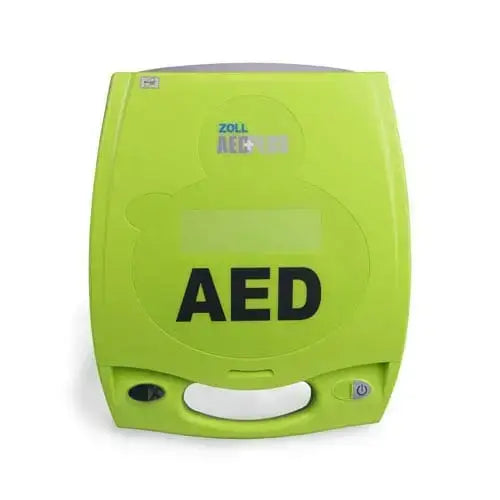Life-Saving Equipment for Your Canadian Cottage:
Every year, thousands of Canadians escape to their cottages for relaxation and recreation. Whether it's a lakeside retreat in Ontario, a mountain cabin in British Columbia, or a seaside haven in Nova Scotia, cottage country provides a cherished respite from urban life. However, the remote nature of these getaways presents unique challenges when medical emergencies occur.
Sudden cardiac arrest (SCA) can happen anywhere, at any time, to anyone—regardless of age or health status. When you're at your cottage, far from emergency medical services, having an Automated External Defibrillator (AED) on hand could mean the difference between life and death.
The Critical Time Factor in Cardiac Emergencies
When sudden cardiac arrest strikes, every minute without defibrillation reduces survival chances by 7-10%. In rural or remote areas across provinces like Alberta, Manitoba, and Saskatchewan, emergency response times can exceed 30 minutes—far beyond the critical 3-5 minute window when defibrillation is most effective. Amazingly, with an AED and CPR together people have over a 70% chance of survival, vs. only 5% with CPR alone.
A cottage AED provides immediate access to life-saving defibrillation, dramatically improving survival rates. Modern AEDs are designed for use by non-medical individuals, with voice prompts and automatic analysis systems that guide users through the resuscitation process.

https://aed.ca/products/zoll-aed-plus-fully-automatic-aed-with-cover
Provincial Considerations Across Canada
British Columbia
BC's varied terrain, from coastal islands to mountainous regions, means many cottages are in areas with limited cell service and long emergency response times.
Alberta
Rural Alberta properties often face significant distances to emergency medical services, particularly in cottage country near the Rocky Mountains.
Saskatchewan
The province's vast prairies mean many recreational properties are truly remote, with considerable distances to the nearest medical facilities.
Manitoba
Lake country in Manitoba attracts many cottagers, but emergency services can be thin on the ground around popular destinations like Lake Winnipeg.
Ontario
With over 250,000 lakes, Ontario has the highest concentration of cottages in Canada, many accessible only by boat or private road.
Quebec
Rural chalets in Quebec, particularly in the Laurentians or Eastern Townships, can be isolated during all seasons.
New Brunswick
Coastal and riverside cottages in New Brunswick often experience seasonal road access challenges, complicating emergency response.
Nova Scotia
Many cottages along Nova Scotia's shorelines are in areas where ambulance access is limited.
Prince Edward Island
Even on a smaller island, PEI's rural cottages can face delays in emergency response, particularly during tourist season.
Newfoundland and Labrador
Perhaps the most challenging province for emergency access, with many remote cabins accessible only by boat or helicopter.
Northwest Territories, Yukon, and Nunavut
While traditional "cottages" are less common in these territories, remote cabins and camps face extreme isolation and medical access challenges.
Understanding AED Technology and Terminology
When considering an AED for your cottage, familiarize yourself with these key terms:
- Biphasic technology: Modern AEDs deliver an electrical current that travels in two directions, requiring less energy while providing more effective treatment.
- Impedance compensation: This feature adjusts the shock based on the patient's body resistance, ensuring optimal energy delivery.
- CPR feedback: Many devices now provide real-time guidance on compression depth and rate during cardiopulmonary resuscitation.
- Automatic vs. semi-automatic: Automatic models deliver shocks without user intervention, while semi-automatic models require the user to press a button.
- IP rating: Indicates dust and water resistance—crucial for cottage environments where the device may be exposed to elements.
- Pre-connected pads: These save valuable time during an emergency, as the electrodes are already attached to the device.
AED Maintenance Considerations for Cottage Settings
Cottage environments present unique challenges for AED maintenance:
- Temperature extremes: If your cottage isn't winterized, ensure your AED can withstand seasonal temperature variations.
- Battery life: Choose models with longer battery life and clear indicators for replacement needs.
- Electrode pad expiration: Pads typically need replacement every 2-5 years, even if unused.
- Self-testing capabilities: Many modern AEDs perform automatic self-tests to ensure readiness.
Trusted Source for Canadian Cottage Owners
For Canadian cottage owners looking for reliable AED solutions, AED.ca stands out as the country's premier provider. Their selection includes devices specifically suited for cottage environments, with features like extended temperature tolerance and robust construction.
Their most recommended model for cottage use combines ease of use, durability, and reliability—essential qualities when medical help is distant. AED.ca also provides comprehensive support, including maintenance reminders and replacement parts.
Beyond the Purchase: Creating a Cottage Safety Plan
An AED is just one component of cottage safety. Consider these additional steps:
- Ensure all regular cottage visitors know where the AED is located and how to use it.
- Post your exact location (GPS coordinates and address) near your phone or in a prominent location.
- Investigate if your cottage association or local community has an AED registry.
- Consider taking a CPR/AED certification course through organizations like Heart & Stroke Foundation.
Investment in Peace of Mind
While the cost of an AED (typically $2,500) may seem significant, it represents an investment in safety and peace of mind. Many cottage owners share the cost among family members who use the property, or cottage associations purchase units that serve multiple properties.
Conclusion
The reality of cottage country—with its remoteness, seasonal road conditions, and distance from emergency services—makes having an AED a prudent decision for property owners across all Canadian provinces and territories. By purchasing a quality device from a trusted source like AED.ca, you're not just adding another safety feature to your cottage—you're potentially saving the life of a family member, friend, or neighbor.
When every minute counts, having an AED at your Canadian cottage isn't just convenient—it's essential.






